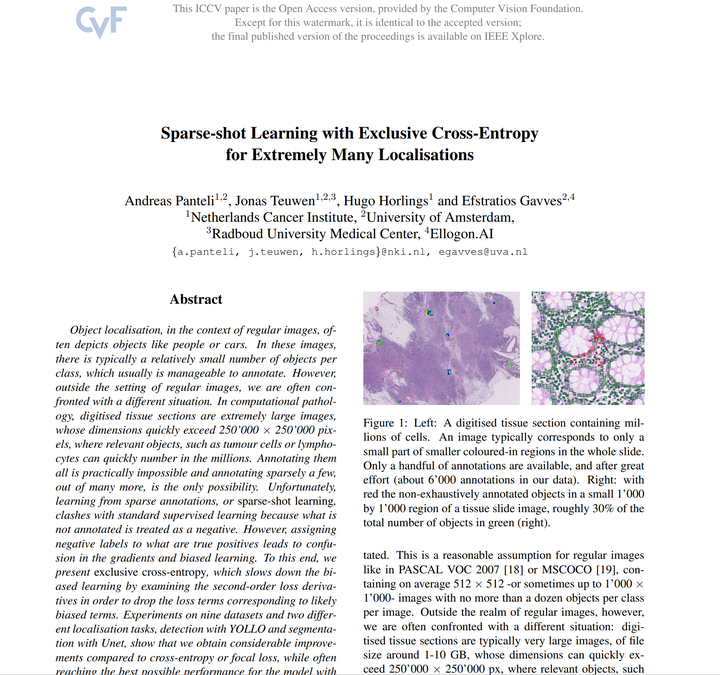
Abstract
Object localisation, in the context of regular images, often depicts objects like people or cars. In these images, there is typically a relatively small number of objects per class, which usually is manageable to annotate. However, outside the setting of regular images, we are often confronted with a different situation. In computational pathology, digitised tissue sections are extremely large images, whose dimensions quickly exceed 250'000x250'000 pixels, where relevant objects, such as tumour cells or lymphocytes can quickly number in the millions. Annotating them all is practically impossible and annotating sparsely a few, out of many more, is the only possibility. Unfortunately, learning from sparse annotations, or sparse-shot learning, clashes with standard supervised learning because what is not annotated is treated as a negative. However, assigning negative labels to what are true positives leads to confusion in the gradients and biased learning. To this end, we present exclusive cross-entropy, which slows down the biased learning by examining the second-order loss derivatives in order to drop the loss terms corresponding to likely biased terms. Experiments on nine datasets and two different localisation tasks, detection with YOLLO and segmentation with Unet, show that we obtain considerable improvements compared to cross-entropy or focal loss, while often reaching the best possible performance for the model with only 10-40% of annotations.